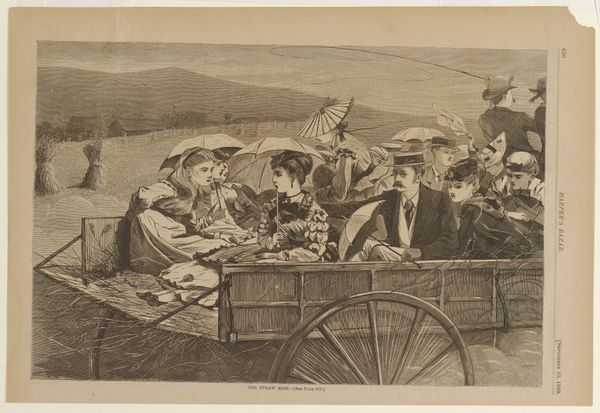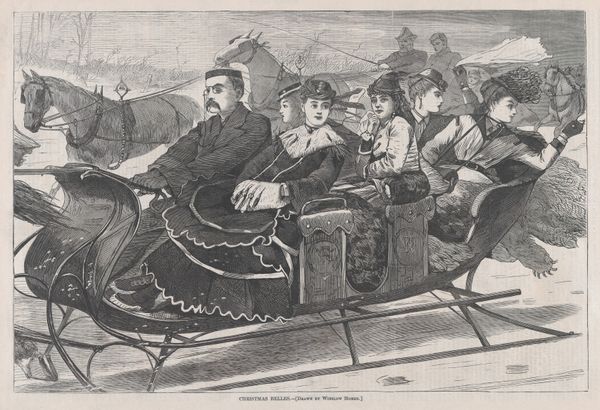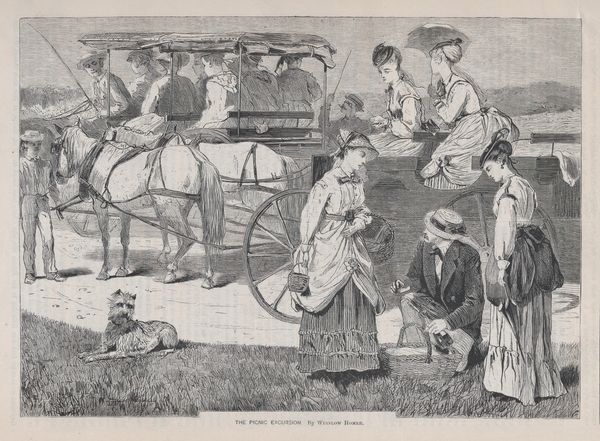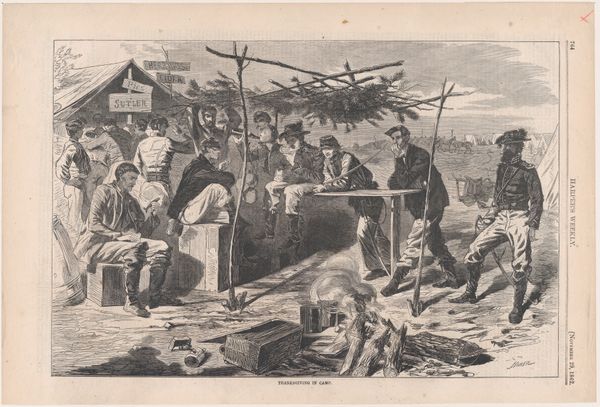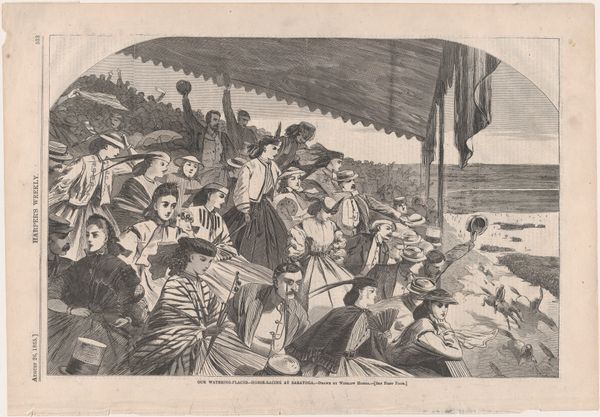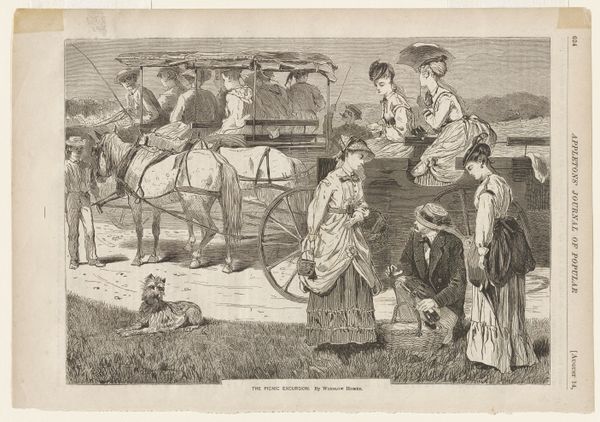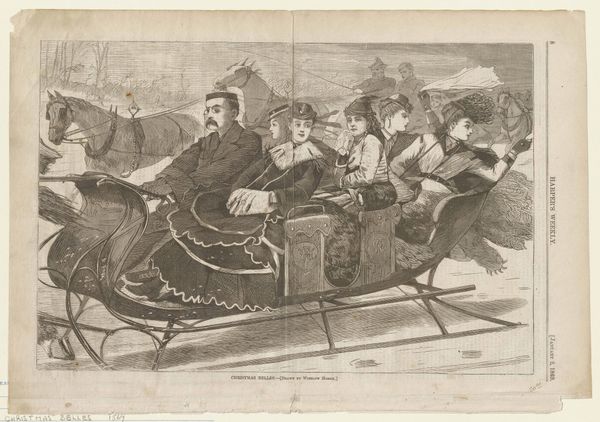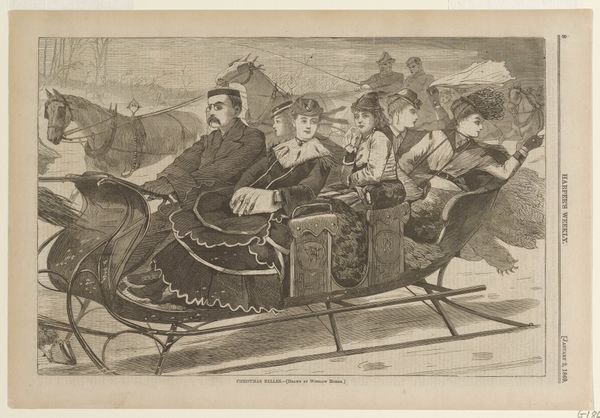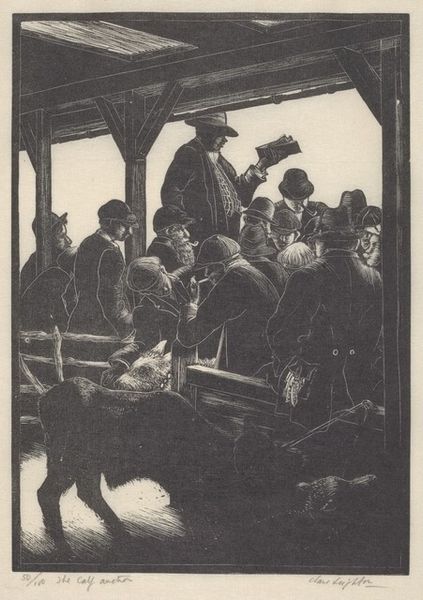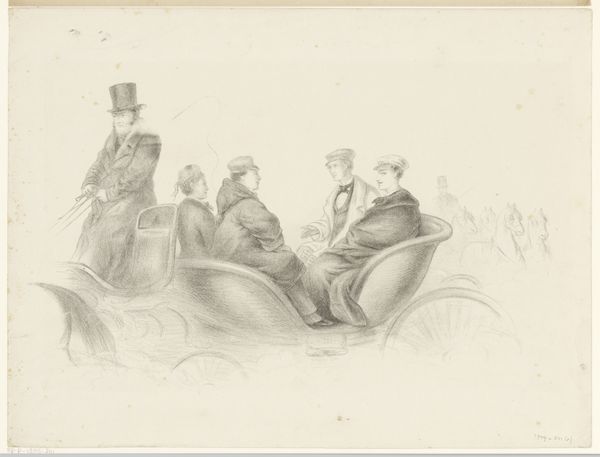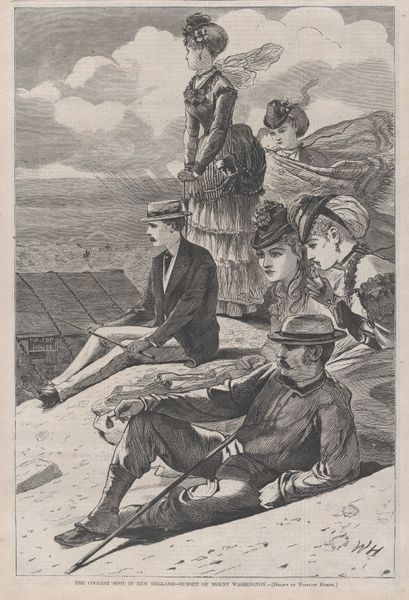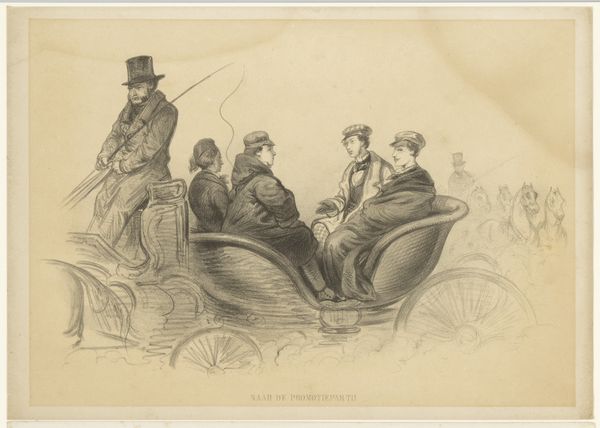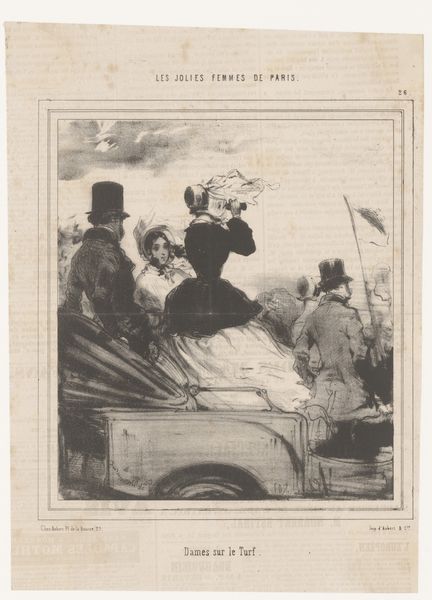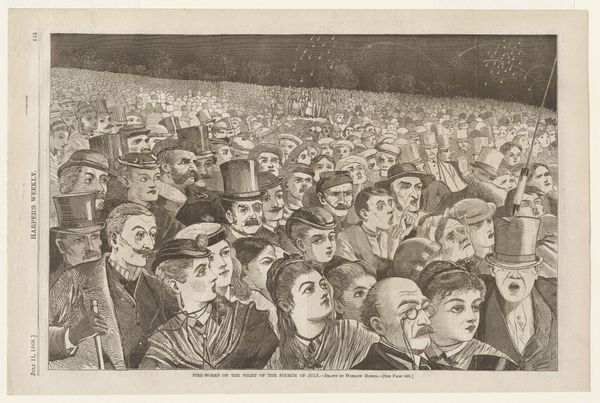
drawing, print, etching
#
drawing
# print
#
impressionism
#
etching
#
landscape
#
genre-painting
#
academic-art
Dimensions: image: 9 1/8 x 13 7/8 in. (23.2 x 35.2 cm) sheet: 10 11/16 x 16 1/16 in. (27.1 x 40.8 cm)
Copyright: Public Domain
Editor: This is "The Straw Ride" from Harper's Bazar, an etching by Winslow Homer, dating back to 1869. The scene depicts a group of what seems to be wealthy individuals riding on a hay wagon. It’s the details in the subjects’ expressions and clothing that make it interesting. What do you make of it? Curator: It's fascinating to consider the social context of this image. Winslow Homer, while often celebrated for his landscapes and depictions of rural life, also engaged with representations of leisure and class. Note that this work appeared in Harper's Bazar, a popular magazine targeting middle- and upper-class women. Do you think that changes the context? Editor: Definitely. Knowing it was published in a fashion magazine gives a totally different meaning to their clothing, making them signifiers of the cultural elite. The landscape almost disappears. Curator: Precisely. And, within that socio-political structure, is this scene critical or celebratory of that class? The leisure activity suggests a romanticized view, doesn’t it? However, is there also perhaps a subtly observed social hierarchy even *within* the wagon? Look at how some figures dominate the scene while others seem more passively included. Editor: Good point. The women up front are clearly the focal point, and even among them, their attire signals distinctions, or aspiration perhaps, as does the contrast in status implied by those seated within the wagon, set against the rural backdrop. Curator: These carefully crafted class representations speak volumes about the intended audience and the magazine's role in shaping societal views. Thinking about how visual culture participates in reinforcing and also subtly questioning social structures opens a wealth of possibilities for interpretation, don’t you think? Editor: Absolutely. This helps unpack it more beyond just a group outing in a wagon of straw. It makes you consider the social dynamics at play and the role of publications like Harper's Bazar. I'll look at etchings in magazines much differently now. Curator: Exactly. Thinking about audience is paramount when unpacking any art or visual document, and the cultural function it performs!
Comments
No comments
Be the first to comment and join the conversation on the ultimate creative platform.
